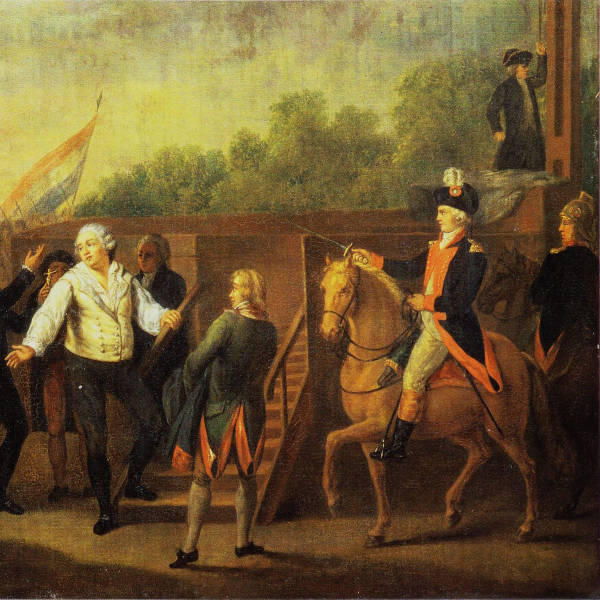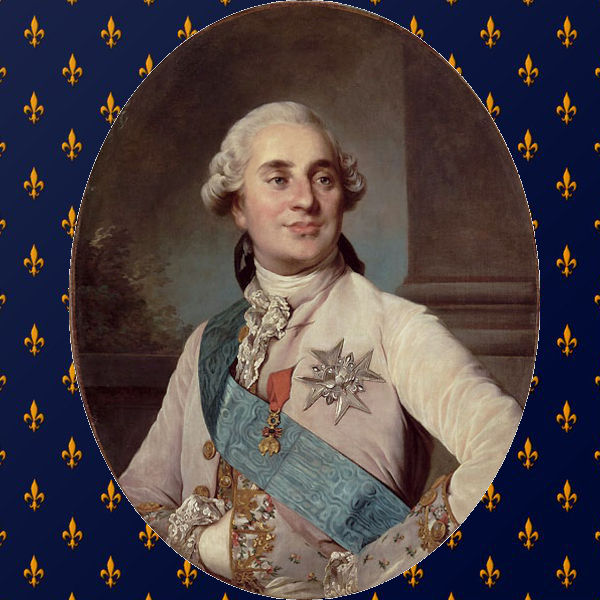DNA spotlight
French King Louis XVI Mystery

French revolutionists condemned King Louis XVI to death on 21. January 1793 by means of the guillotine at the Place de la Revolution in Paris (roughly where the Obelisk decorating the Place de la Concorde stands today). After a short but defiant speech he lost his head as the crowd rushed to the scaffold to dip hankerchiefs into his blood as momentos. An ornate gourd decorated with French Revolution themes was recently uncovered which had contained a blood soaked hankerchief dating to this time. The gourd was allegedly a gift to Napoleon Bonaparte who became First Consul of France in 1799 and Emperor in 1804. An anonymous Italian family was in its posession since possibly the late 1800s and came forward with the relic. It bears an inscription that Maximilien Bourdaloue on 21. January dipped his hankerchief in the blood of the king. Dried blood was scraped out and this is the same DNA we present in this DNA spotlight! The sample contains unsually high and rare markers for the Y-DNA haplogroup G2a.

Louis XVI's direct male line ancestor Henri IV was famous for enacting the Edict of Nantes which guaranteed religious liberties to Protestants ending 30 years of fighting between French Protestants and Catholics - he was assassinated in 1610 by a French Catholic zealot. The remains had been presumed lost in the chaos of the French Revolution after a mob of revolutionaries desecrated the graves of French kings in the royal chapel of Saint-Denis in Paris in 1793. However, the head was passed down over the centuries by secretive private collectors and positively identifed in 2010 with a radiocarbon date between 1450 and 1650. The features were consistent with the king's face including a dark mushroom-like lesion near the right nostrial, a healed facial stab wound and a pierced right earlobe. The hair color and moustache and beard on the mummified head fit the appearance of the king at the time of his death as well as matched his portraits. Furthermore cutting wounds were visible corresponding to the separation of the head from the body in 1793 and digital facial reconstruction of the skull matched the plaster mould of his face made just after his death in 1610. The DNA was then tested and compared to the blood from the gourd.

DNA analysis comparing the dried head of Henri IV and the blood of Louis XVI show they were both G2a haplogroups and that with 95 percent confidence they were 246 times more likely than not to be related. Louis XVII, the 10 year old son of Louis XVI and Marie-Antoinette died from illness or poisoning in prison and his heart was kept in a crystal vase in the Cathedral Basilica of St. Denis - as of today only the female haplogroup analysis has been done to the heart proving his maternal link. Three living direct male-line descendants of Henri IV and Louis XVI had their DNA analyzed to determine their Y-DNA haplogroups. They were all determined to have the Y haplogroup R1b1b2a1a1b (R-Z381). Two of these men draw their male line back to Louis, the Duke of Burgundy (1682-1712), the great grandfather of Louis XVI. The third descended from Louis XIII (1601-1643) who was Henri IV's son. However this contradicts the haplogroup G2a shared by both the mummified head of Henri IV and the blood of Louis XVI. This has created quite a mystery as there is a large set of physical evidence confirming the head was indeed Henri IV's head which also matched the blood of Louis XVI.

Some simply claim the mummifed head and blood sample cannot be those of Henri IV and Louis XVI because the haplogroups don't match despite the vast physical evidence supporting the mummified head was indeed Henri IV. Others point to infidelity at the French court which some believe was fairly rampant. A nonpaternity event at key points in the royal lineage would explain why there was no Y-DNA match between the living members of the House of Bourbon and the head and blood samples. A third theory is that both relics were contaminated during the chaos of the French Revolution or later as they were passed from collect to collector. It seems this mystery could be finally resolved if Louis XVII's heart could be re-tested with today's technology - either it should reveal a Y haplogroup of G2a or R-Z381. Unfortunately the heart was removed from the crystal vase and buried alongside the bodies of Louis XVI and Marie-Antoinette in June 2004.
Relic French King Louis XVI
- Sample ID: LXVI
- Year: 1793 AD
- Sex: Male
- Location: 48.8656,2.3190
